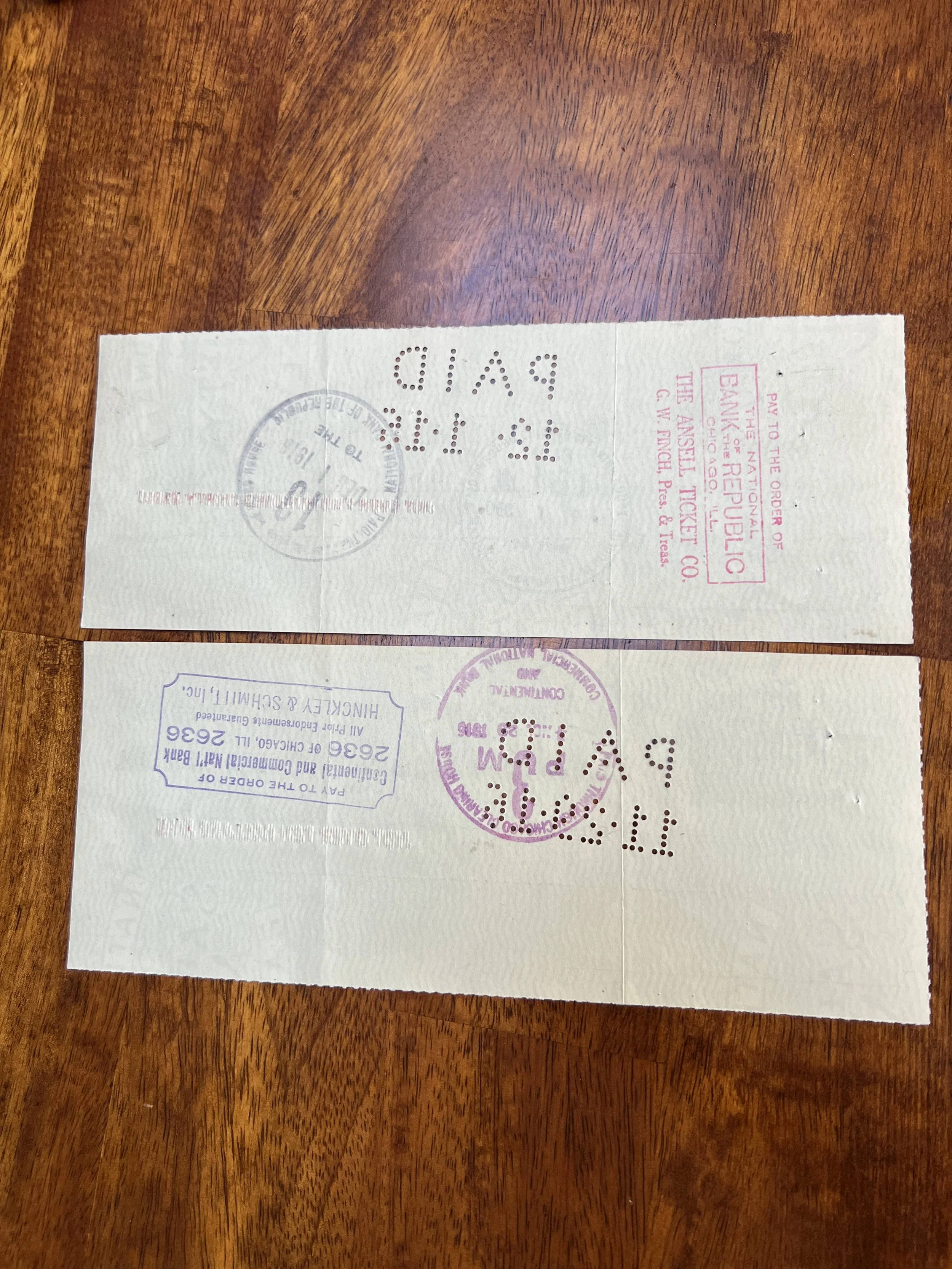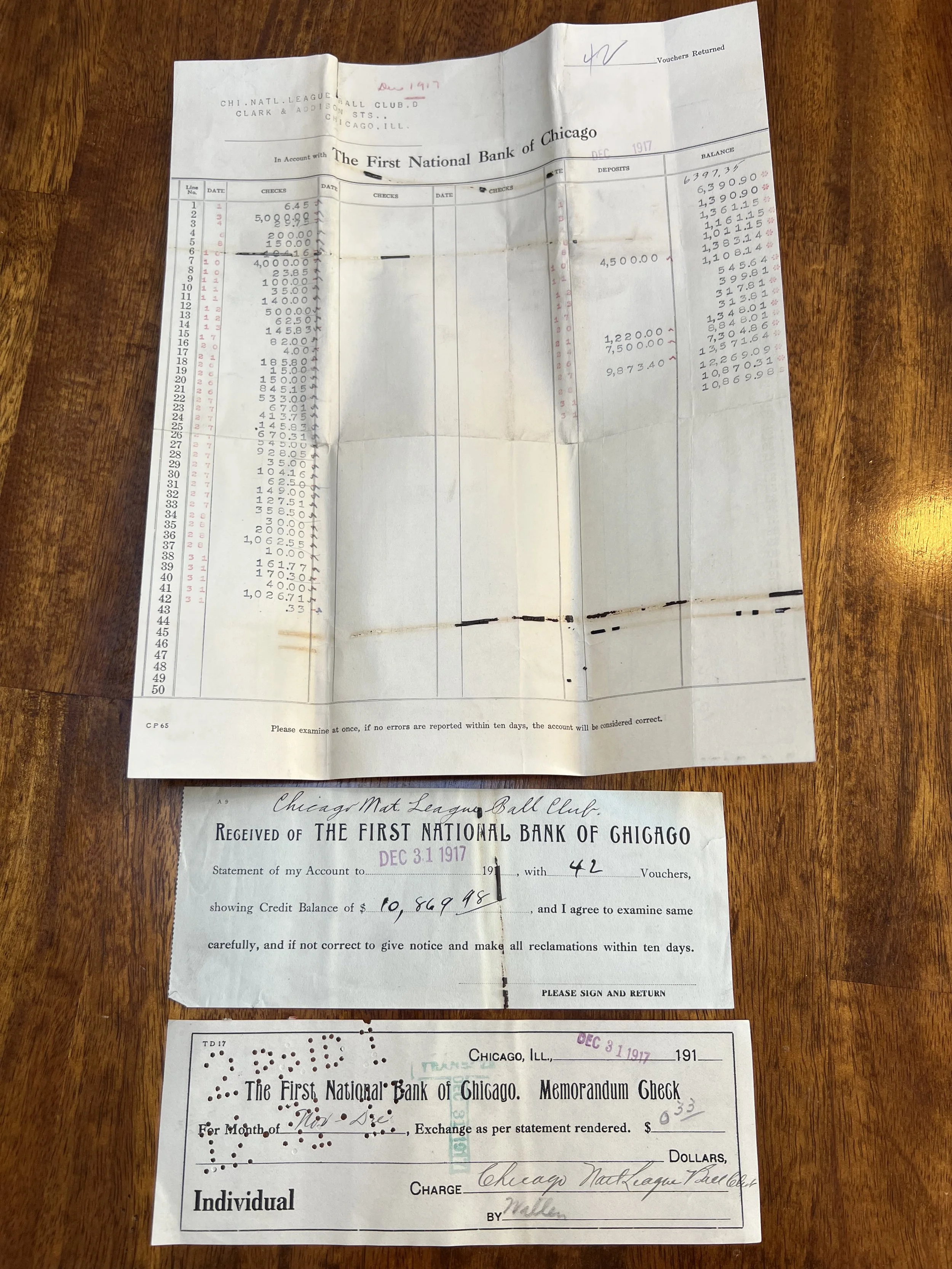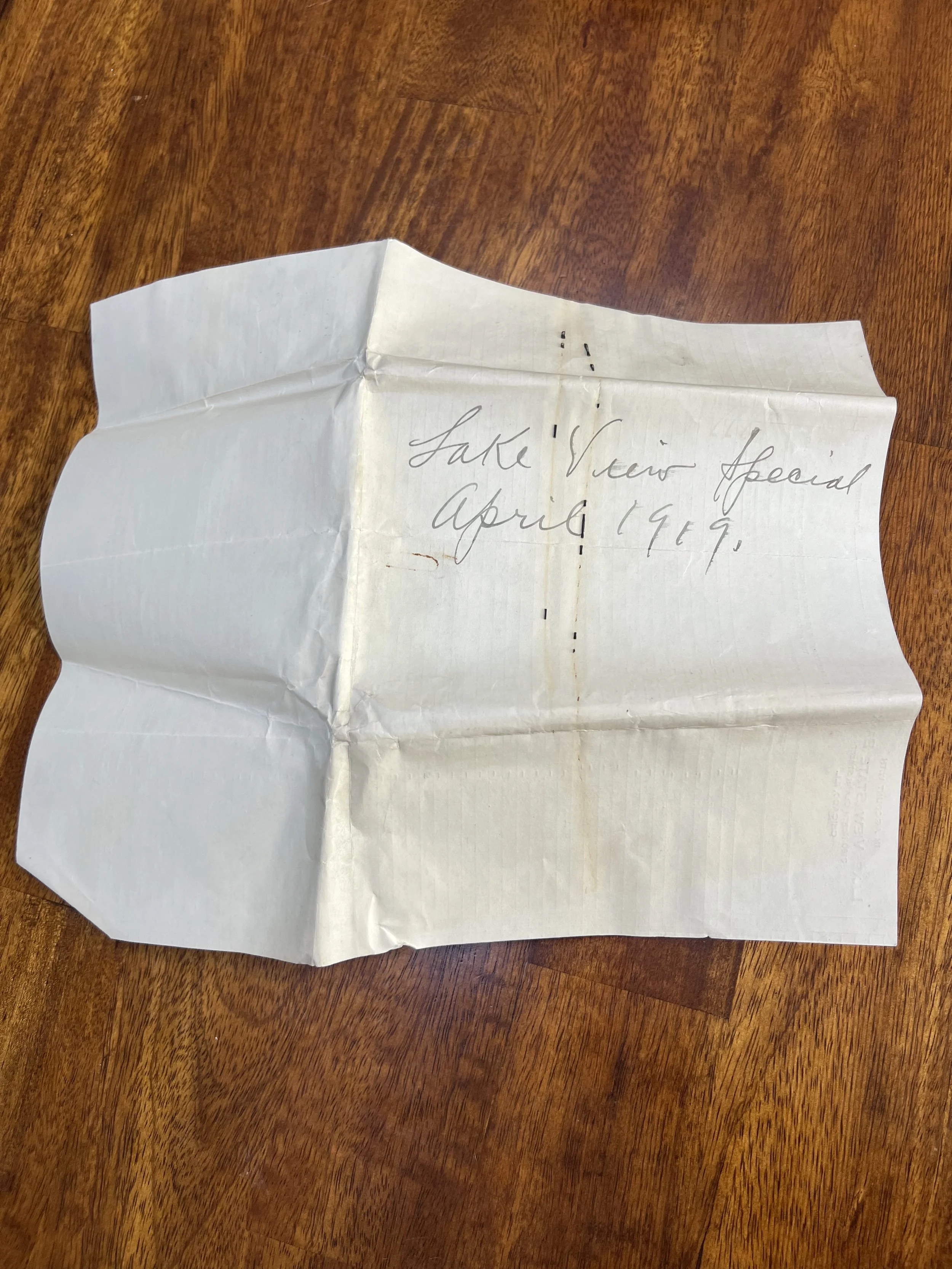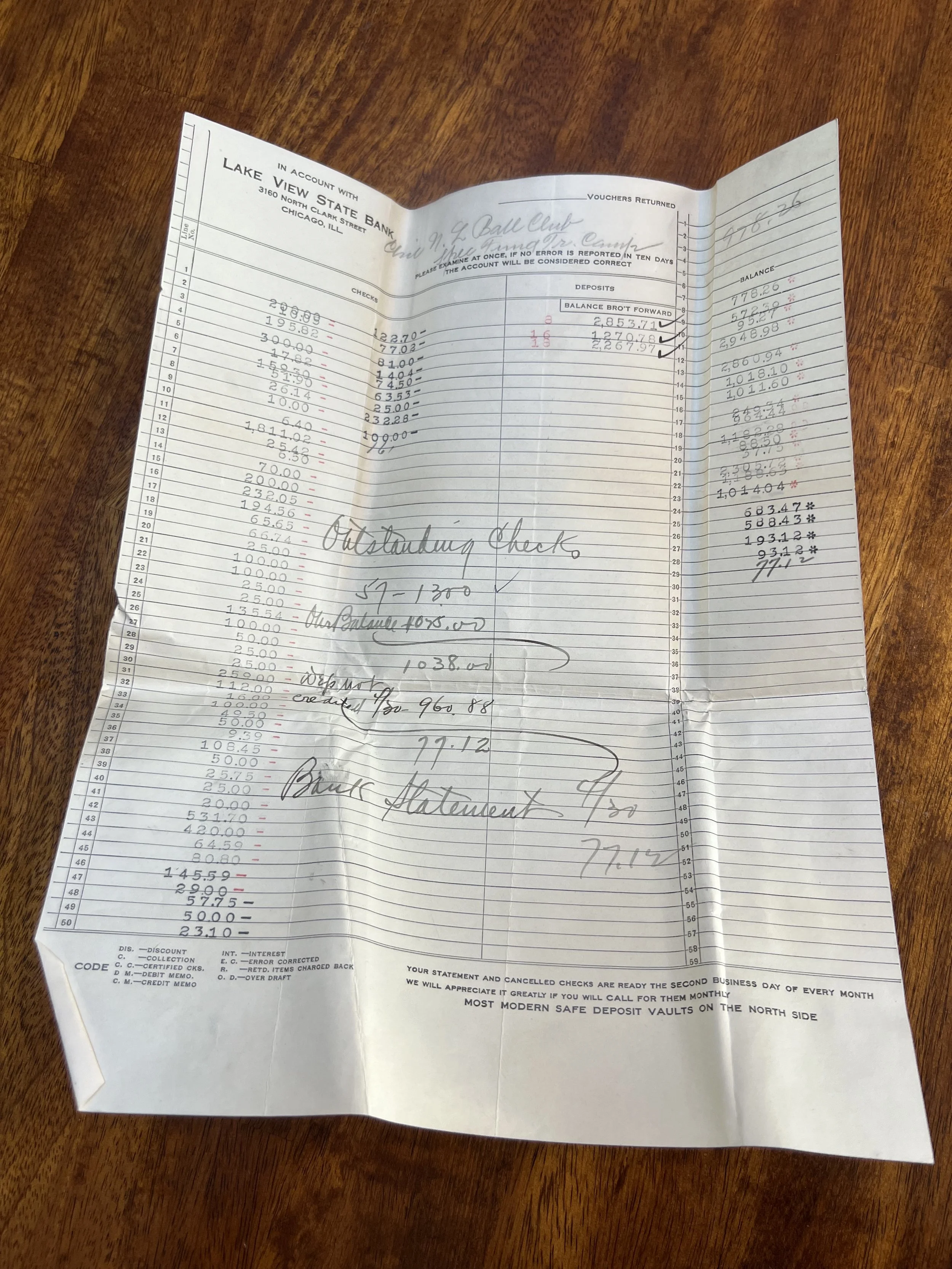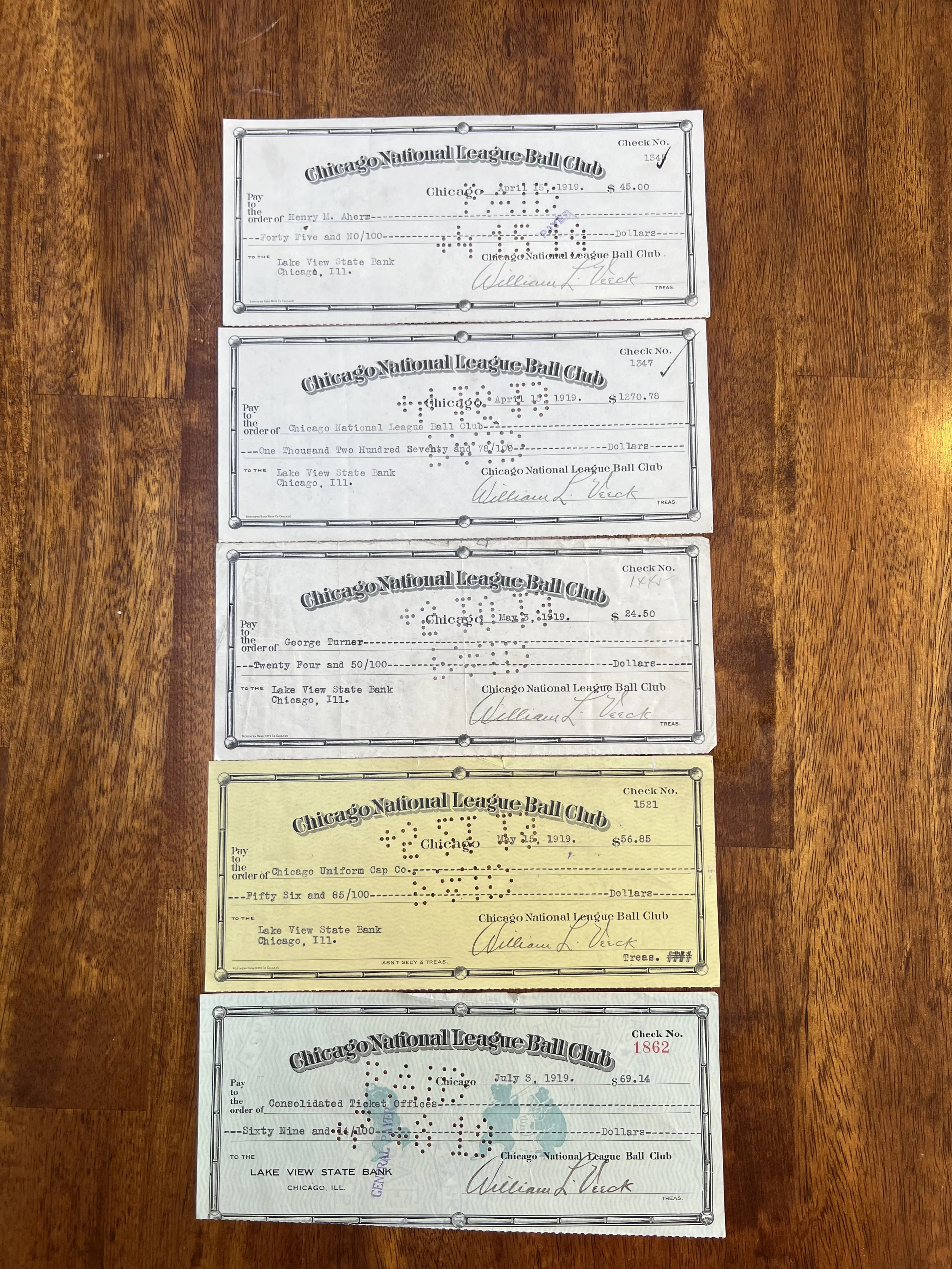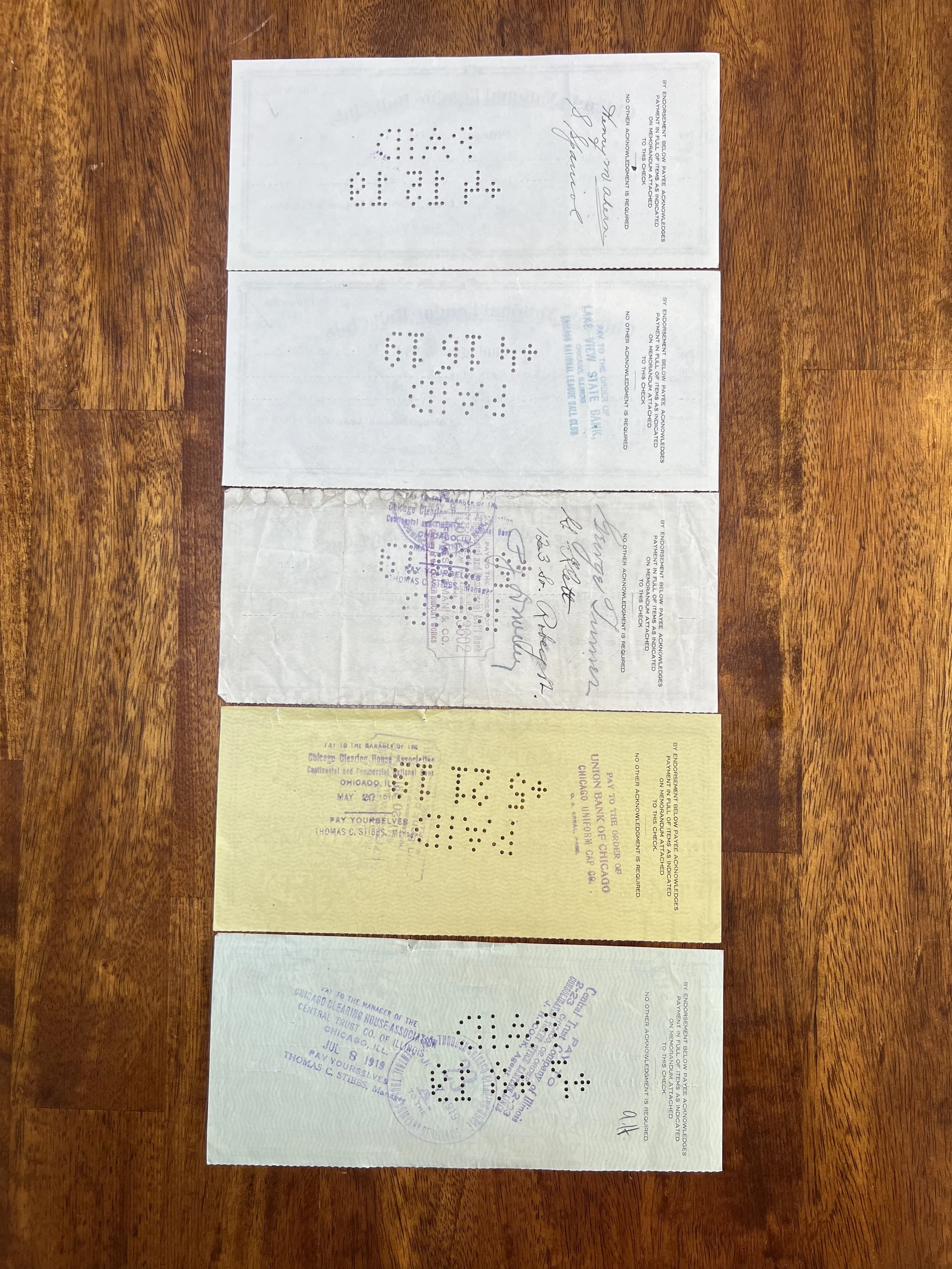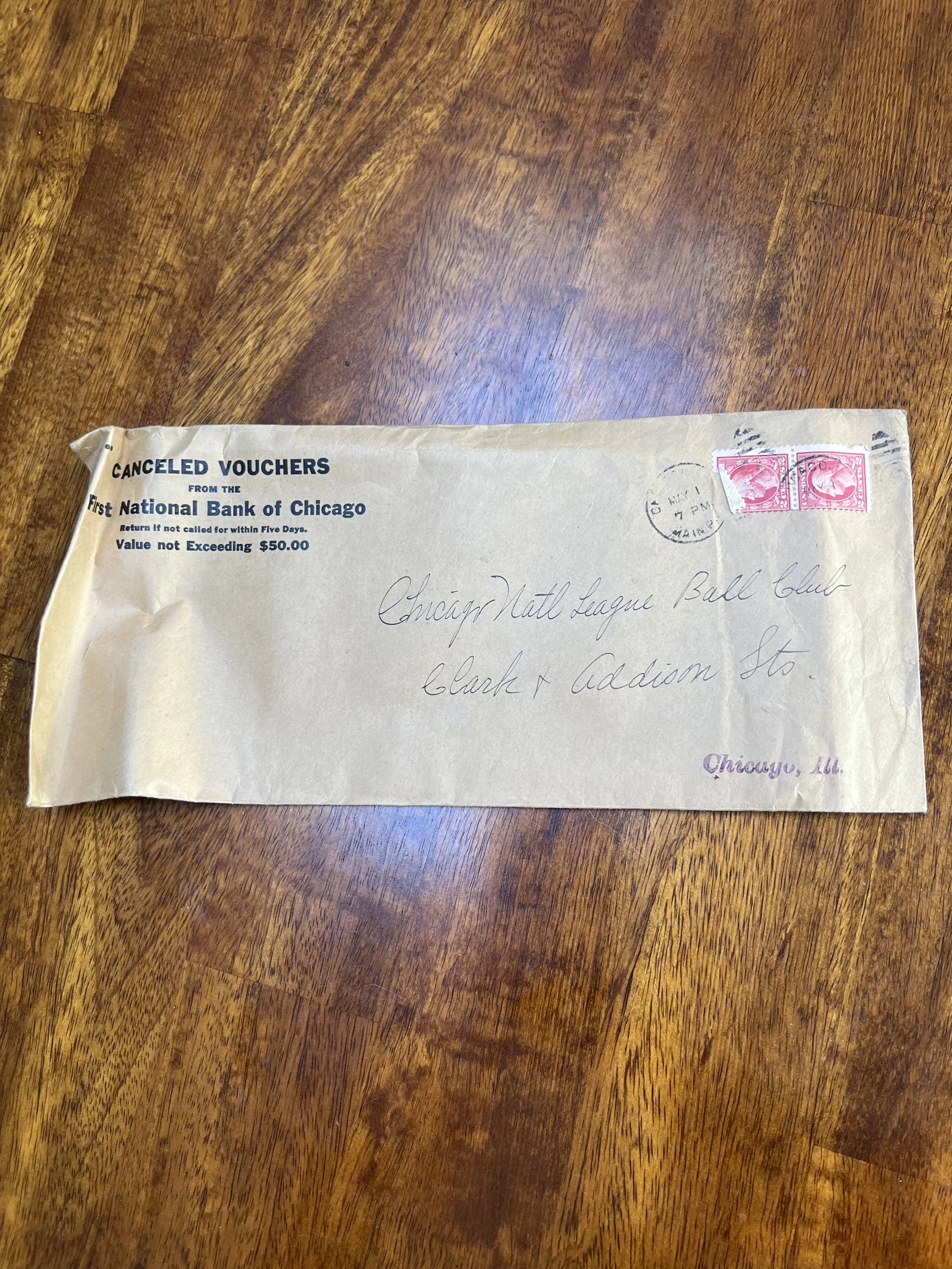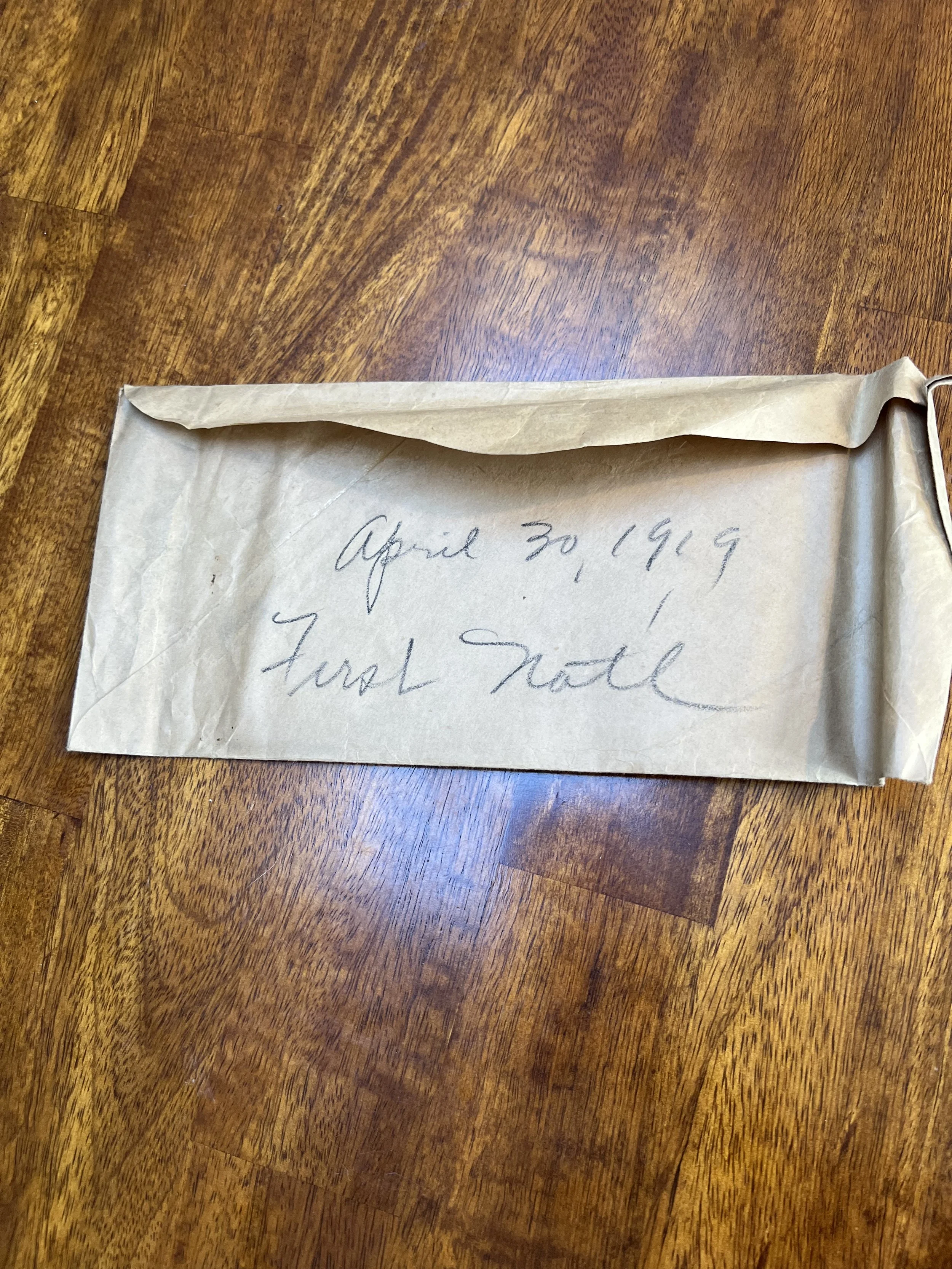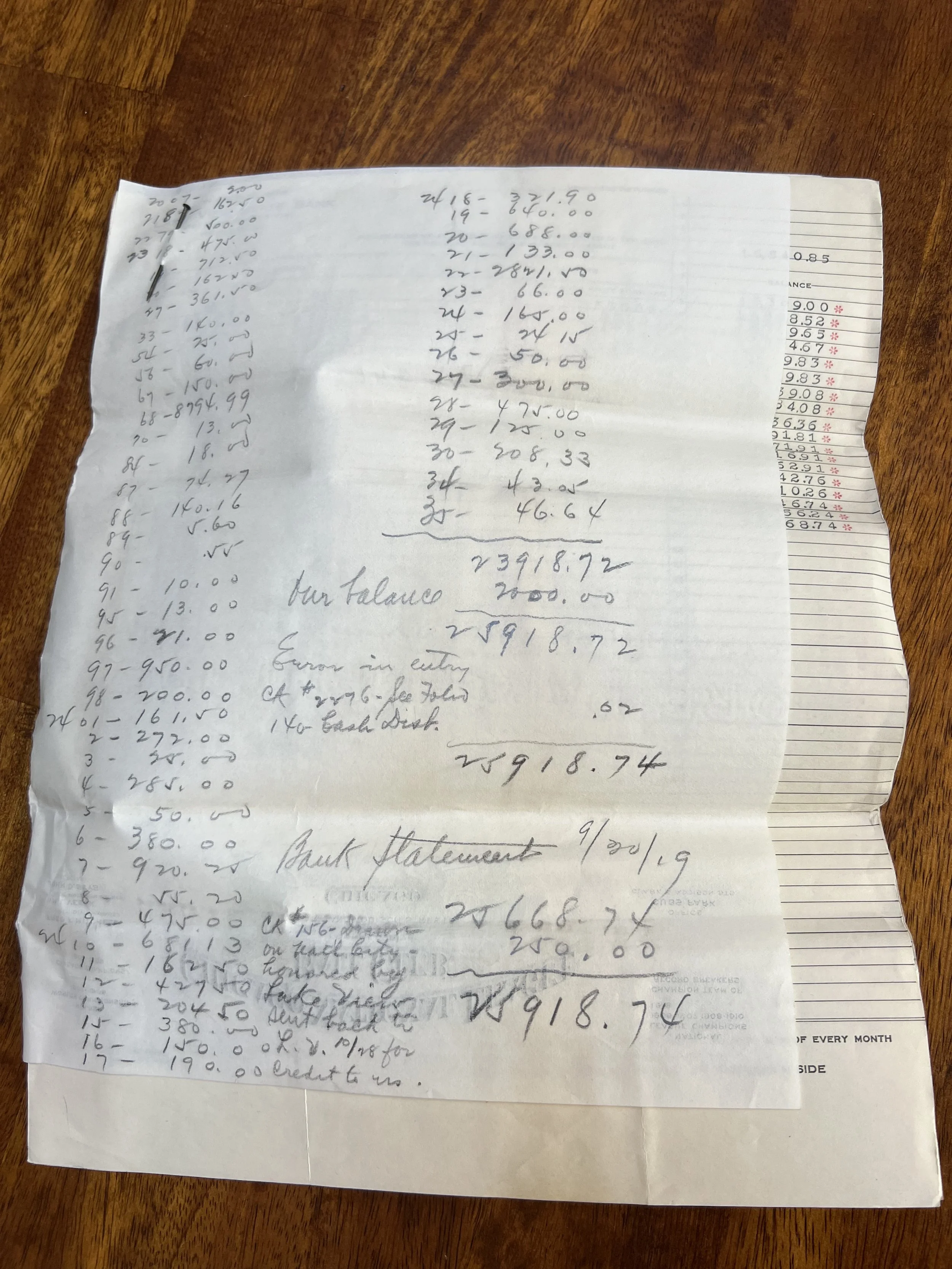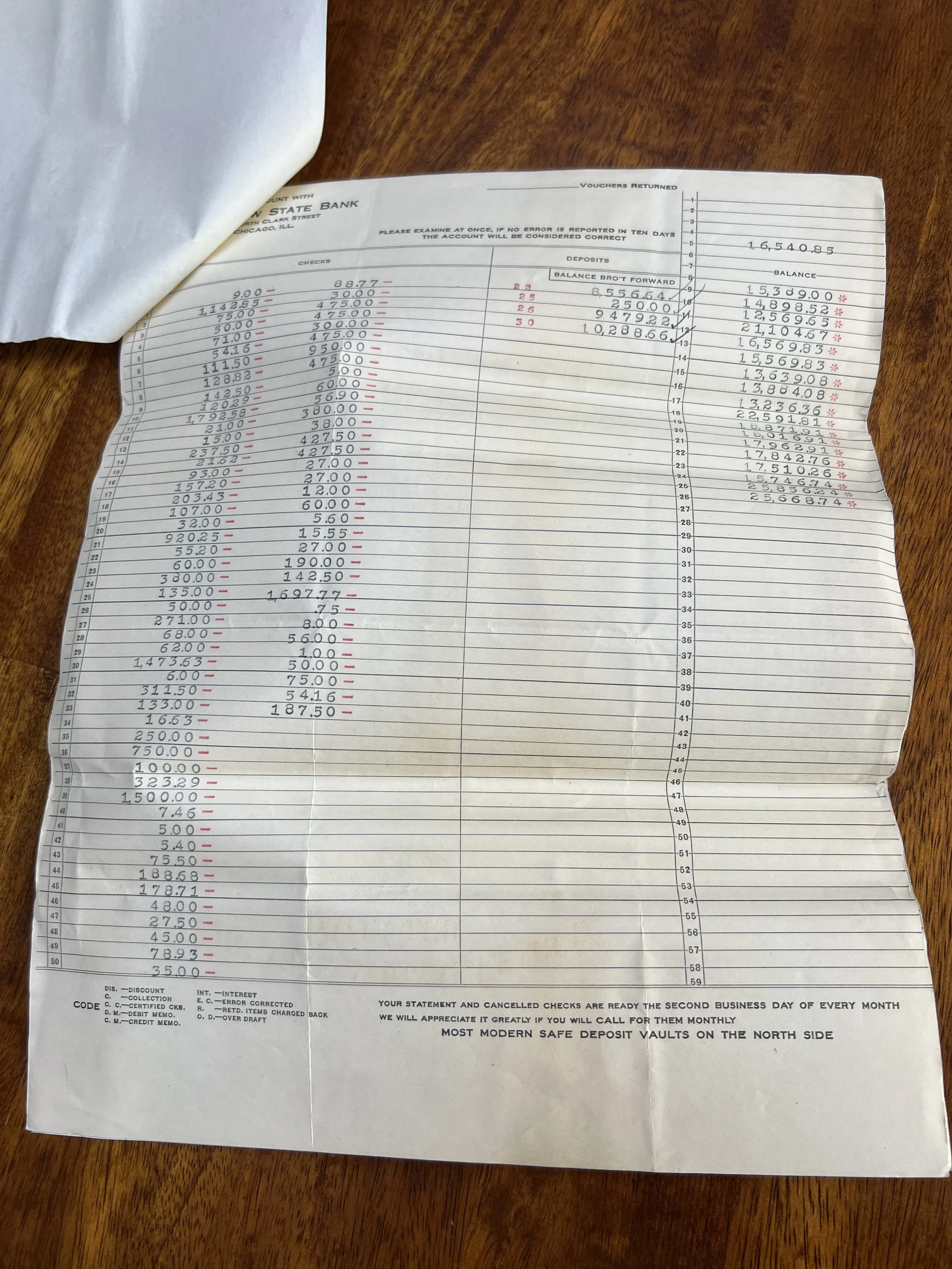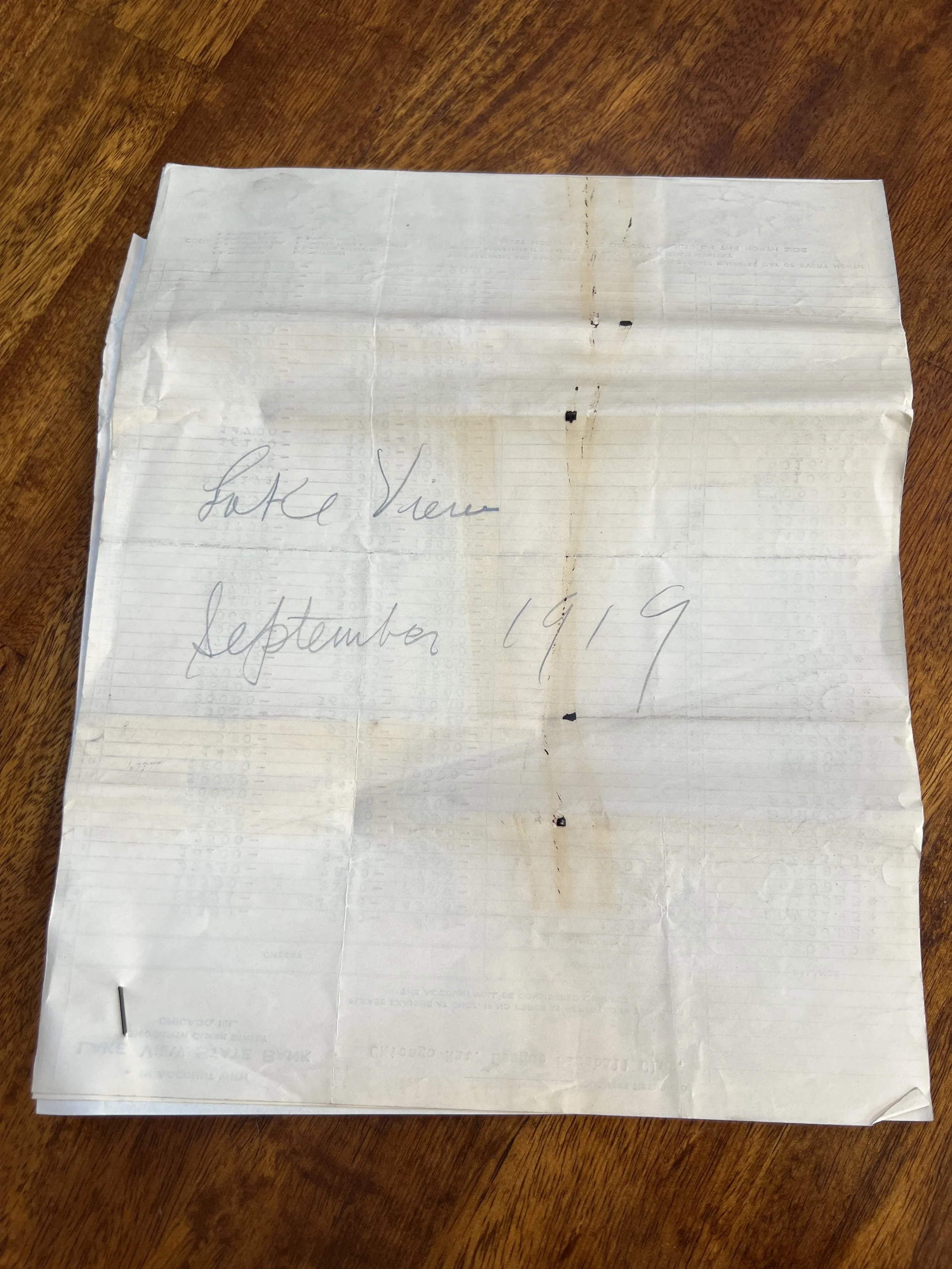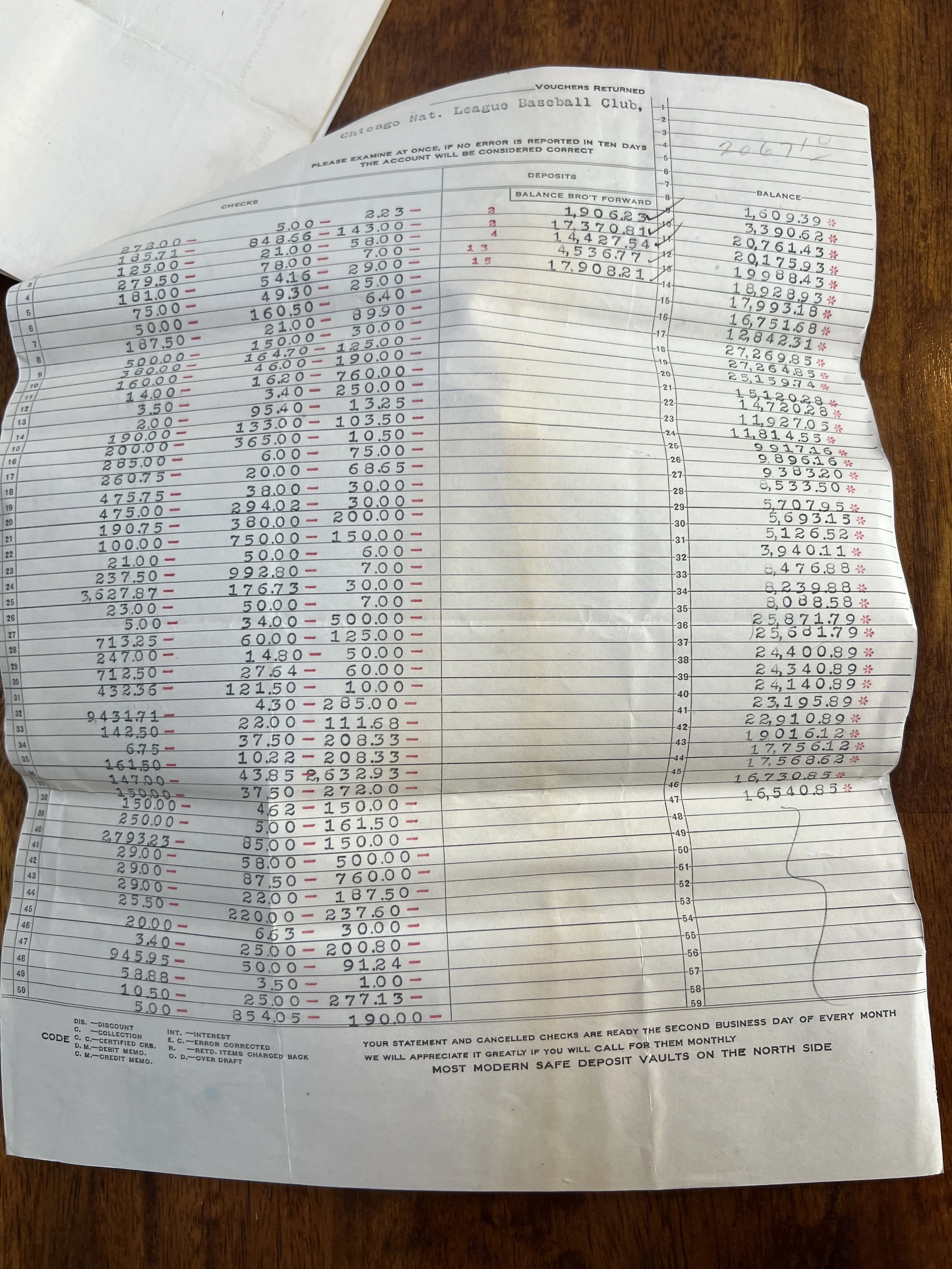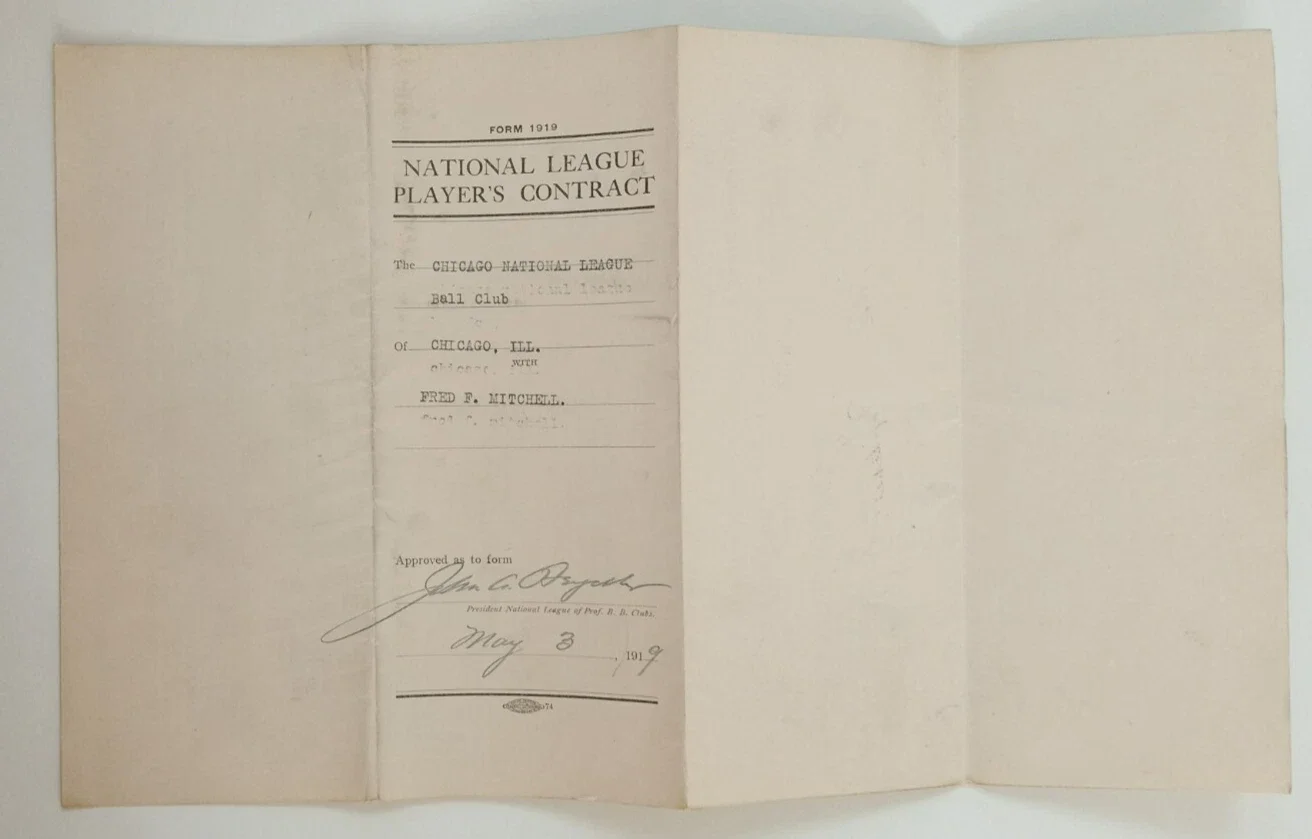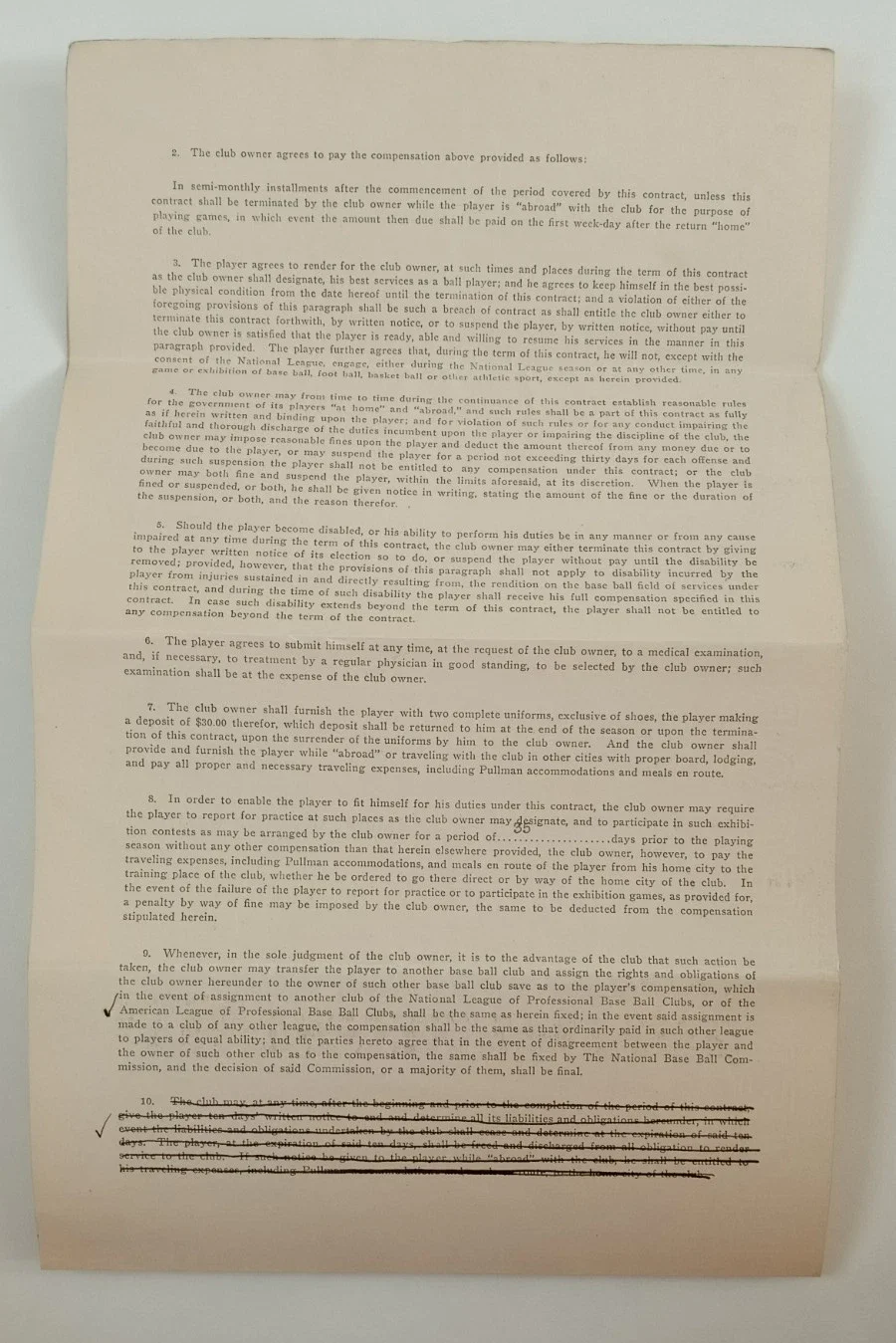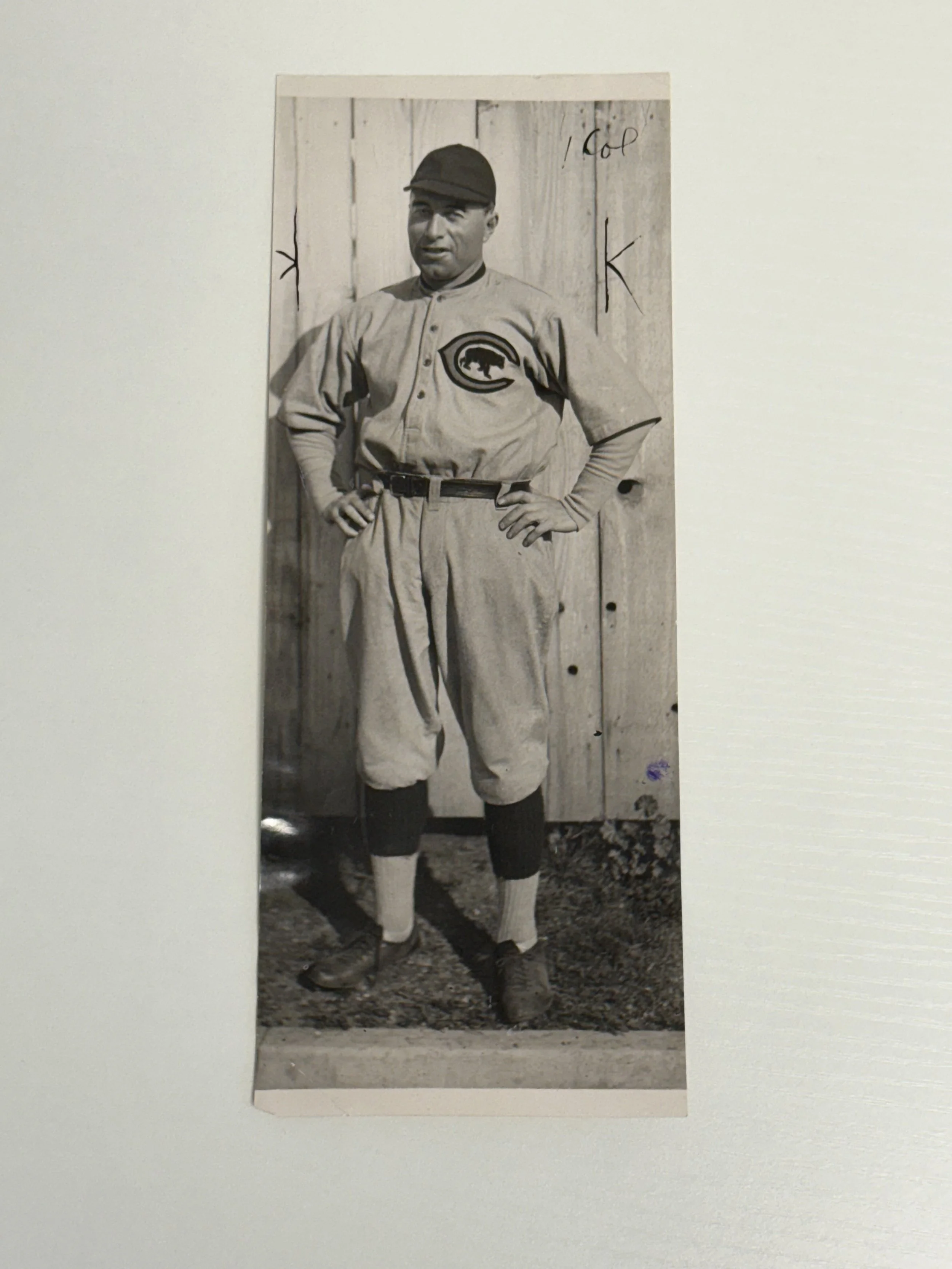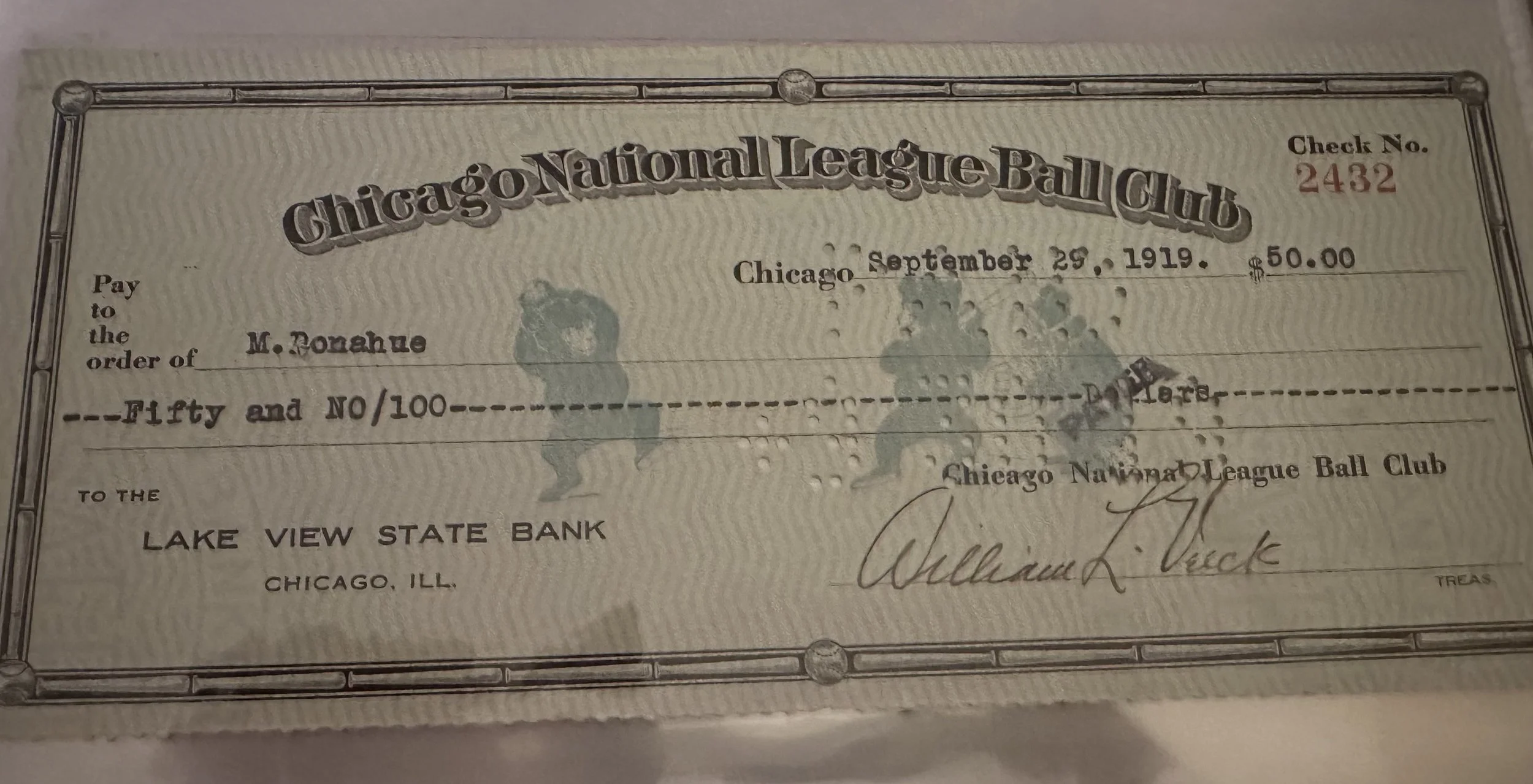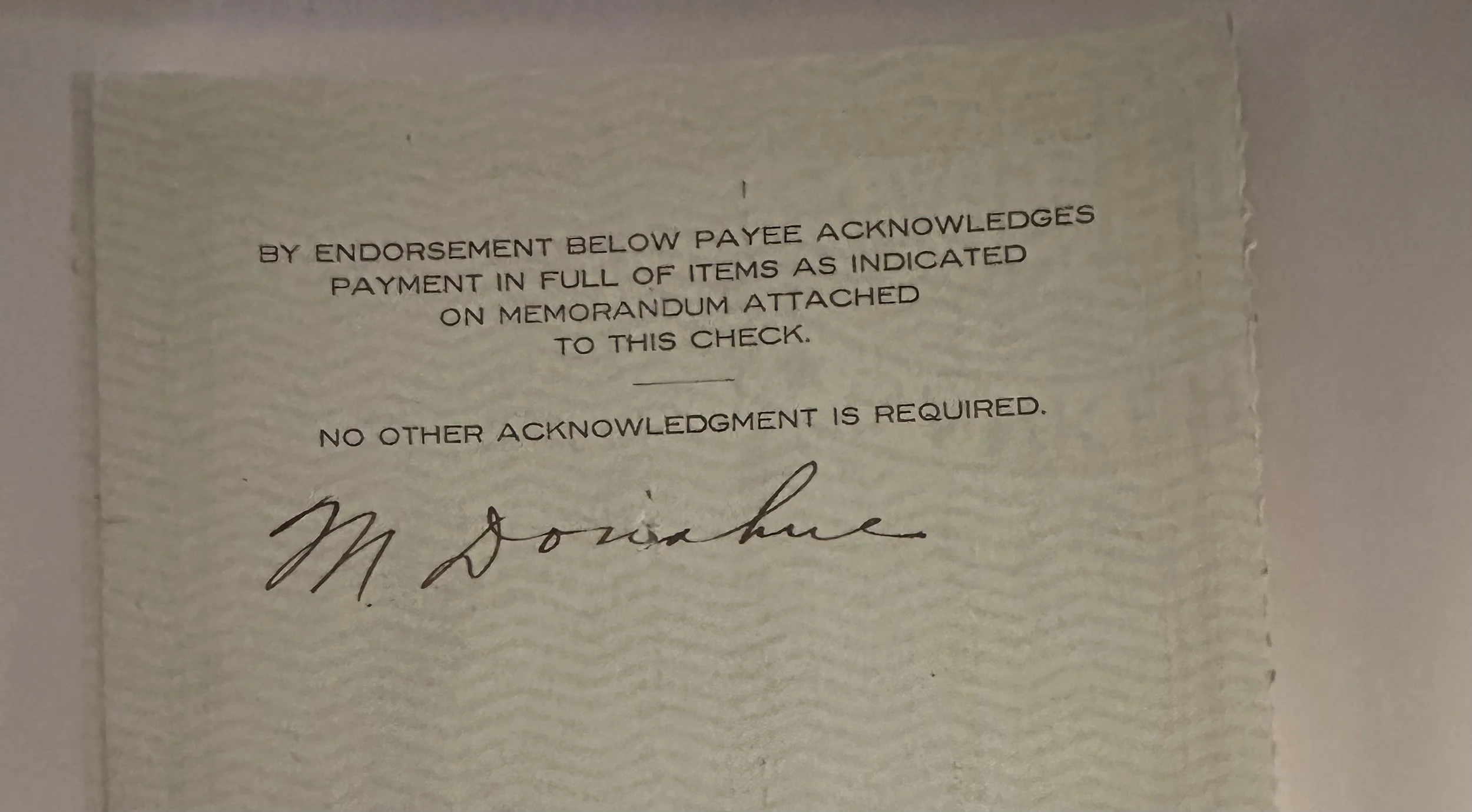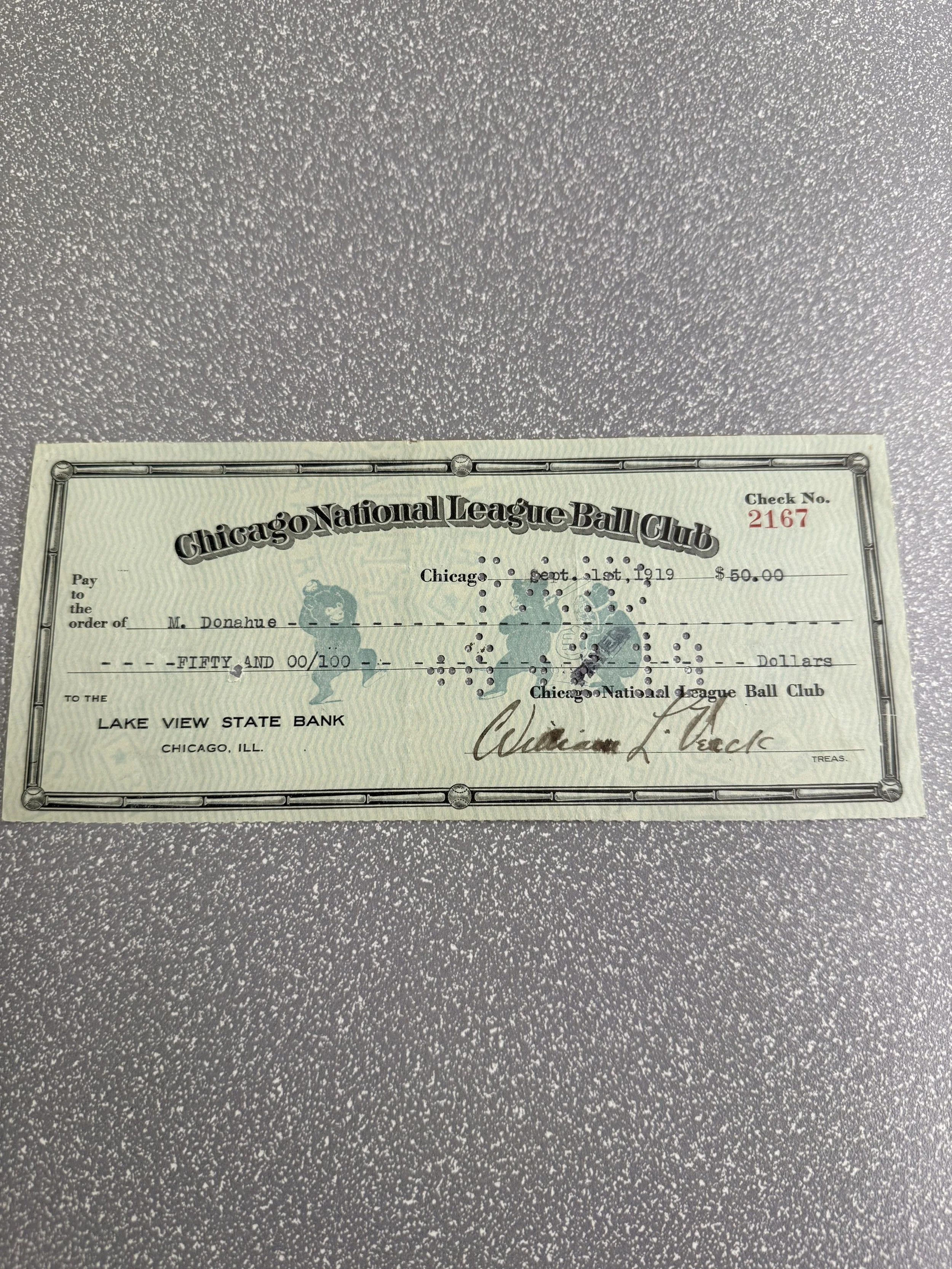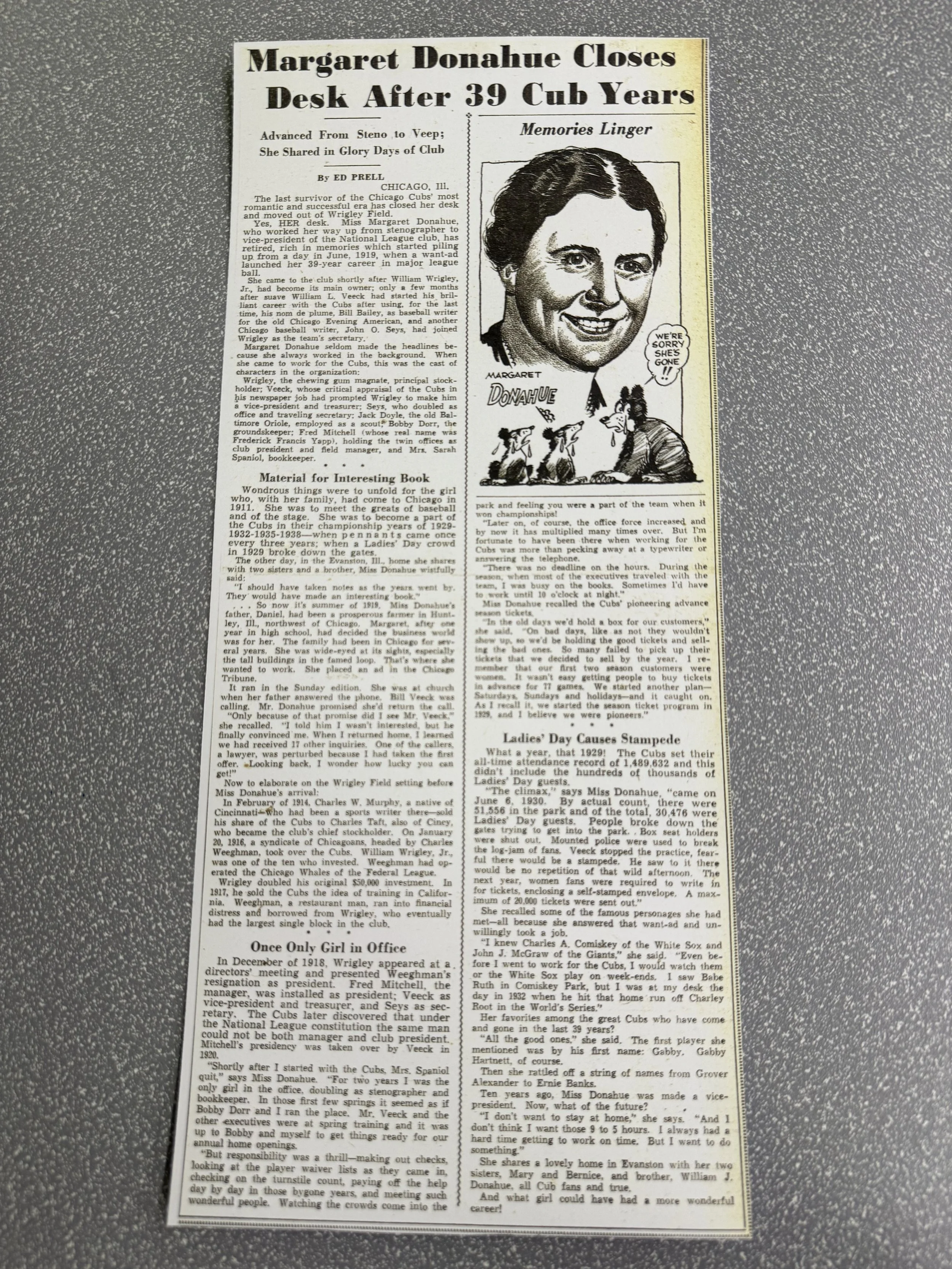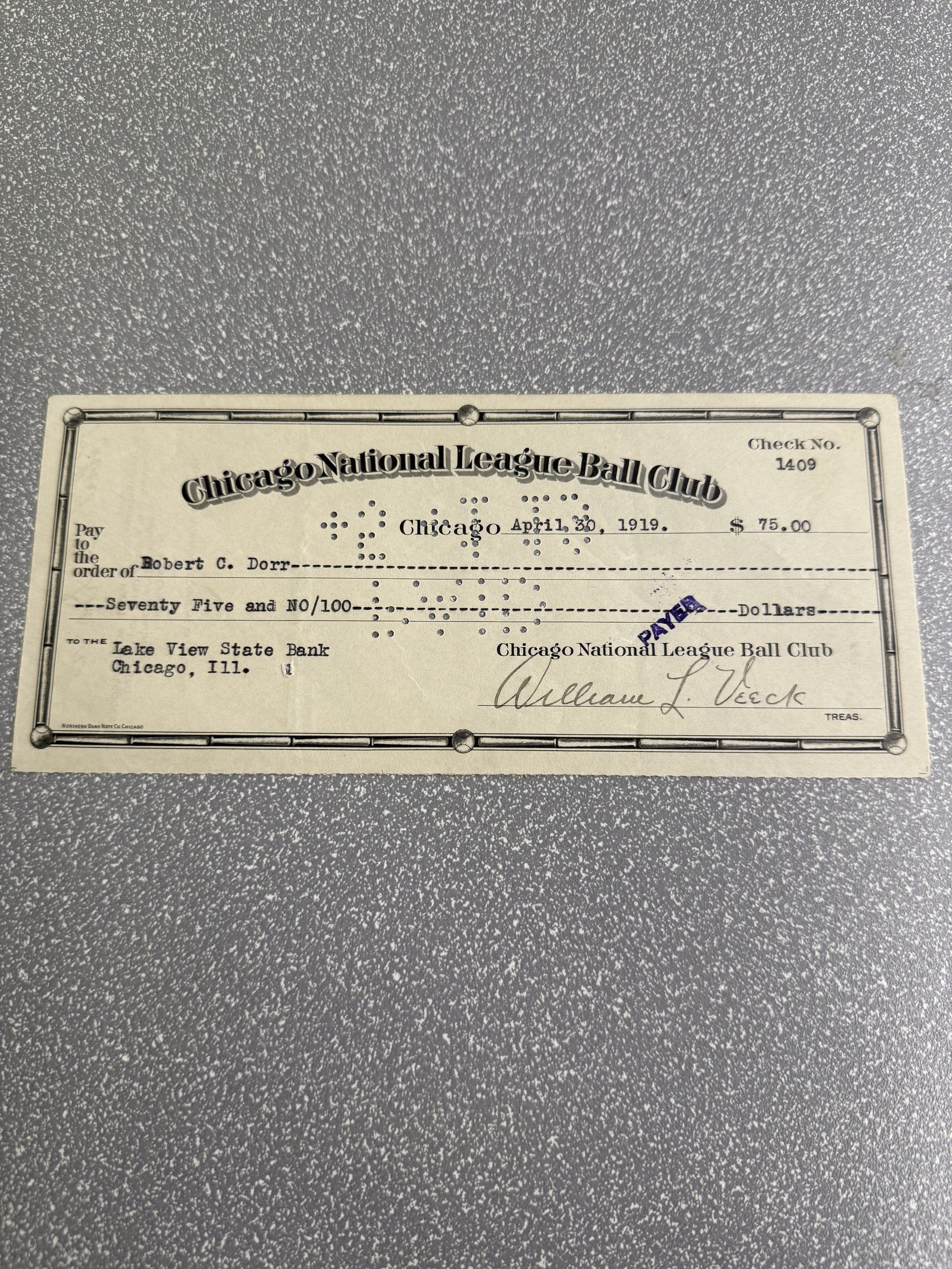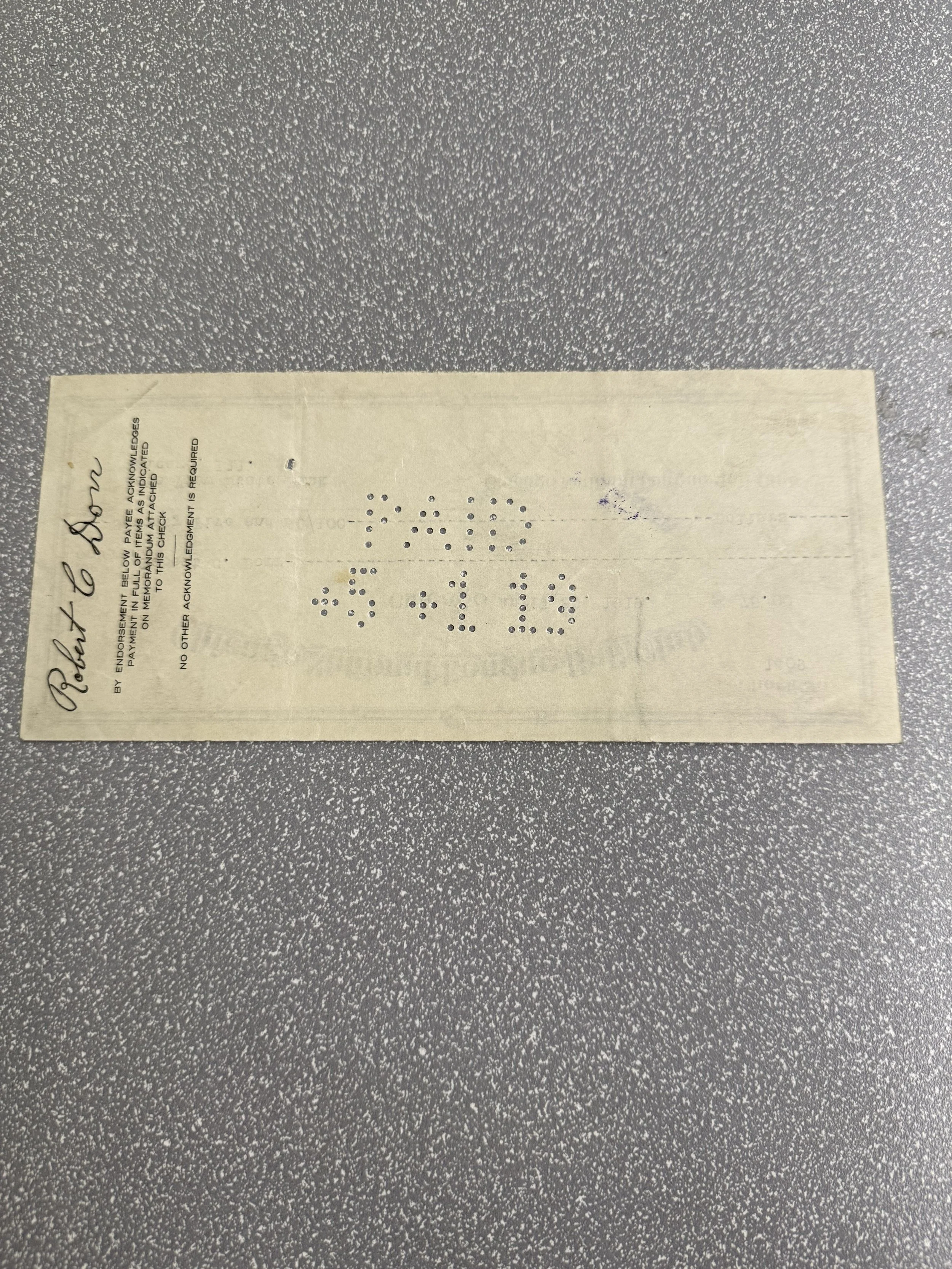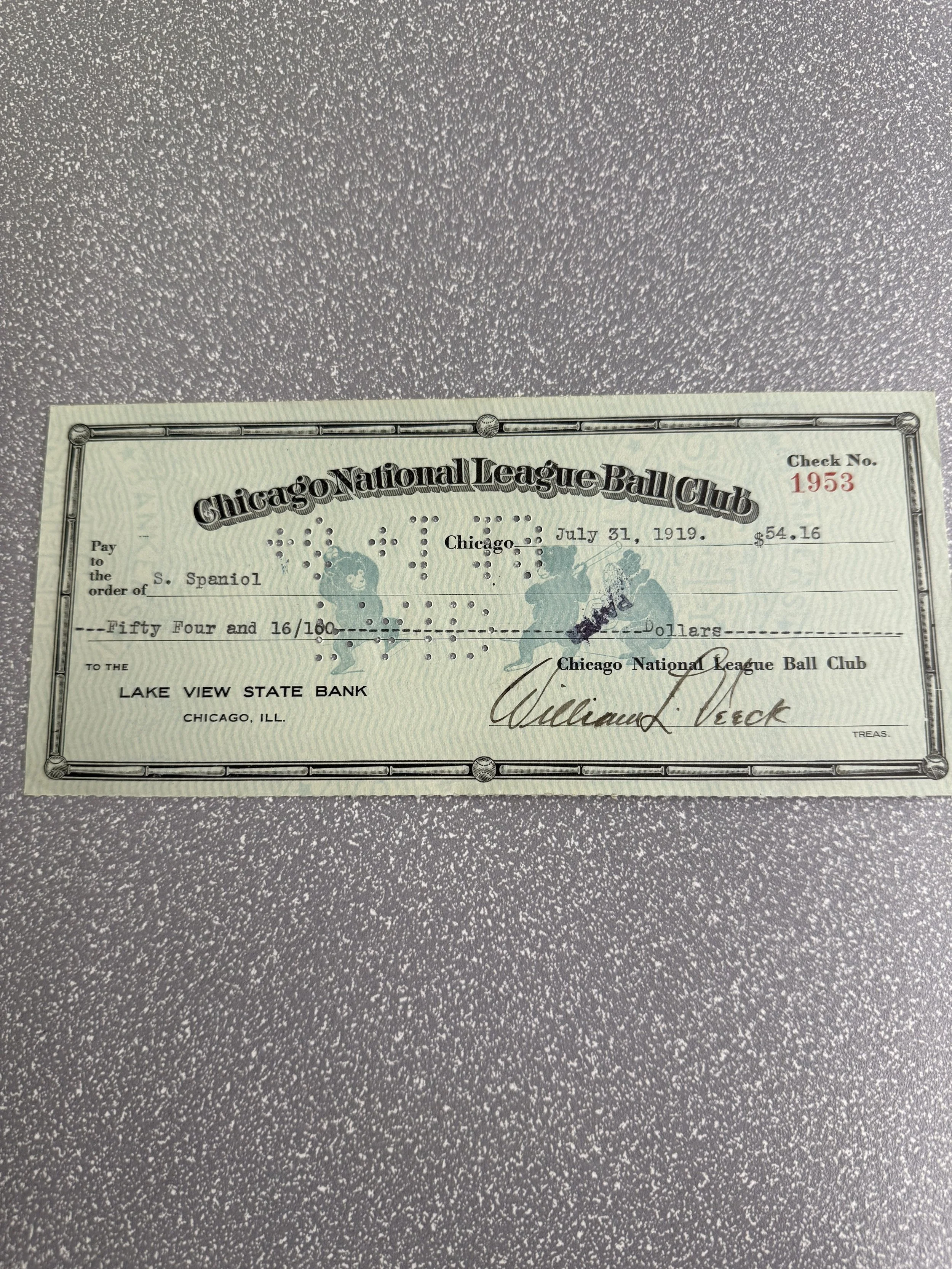Chicago Cubs Financial and Team Documents (1916-1919)
This extraordinary collection of original Chicago Cubs financial records and correspondence offers a rare window into the inner workings of one of baseball’s most historic franchises during a transformative period in both American and sporting history. Spanning from 1916 through 1919, the materials include meticulously kept bank ledgers, payroll checks, contracts, and team-issued documents, many bearing the signatures of key figures such as team president William Veeck Sr., manager Fred Mitchell, and former club owner Charles H. Weeghman. Together, these records trace the Cubs’ evolution from their inaugural season at Weeghman Park (soon to become Wrigley Field) through the World War I era and into the turbulent year of the 1919 Black Sox Scandal, a time that reshaped Major League Baseball both on and off the field.
The 1917 documents stand out as a particularly vivid snapshot of the club’s operations during wartime. An original bank ledger from The First National Bank of Chicago, dated December 31, 1917, details deposits, checks, and an ending balance exceeding $10,000, illustrating the financial stability and organization of a Major League franchise amid global uncertainty. Complementing this are Fred Mitchell’s 1917 personal and team-issued checks, each hand-signed by the manager who would lead the Cubs to the 1918 World Series, reflecting the close relationship between leadership, labor, and the business of baseball during the Deadball Era.
The later items from 1919 expand this story with payroll checks and contracts authenticated by PSA/DNA, featuring the signatures of Veeck, Mitchell, and National League President John Heydler. Among these are historically significant documents such as a check from Veeck to Joseph G. Kren, founder of the Kren Bat Company, whose bats were favored by legends like Babe Ruth and Honus Wagner, and a payment to U.S. Treasurer John Burke, bridging baseball and national history. A 1916 Type 1 photograph of Fred Mitchell in uniform further personalizes the collection, capturing the leadership behind the Cubs’ transition into the modern era.

